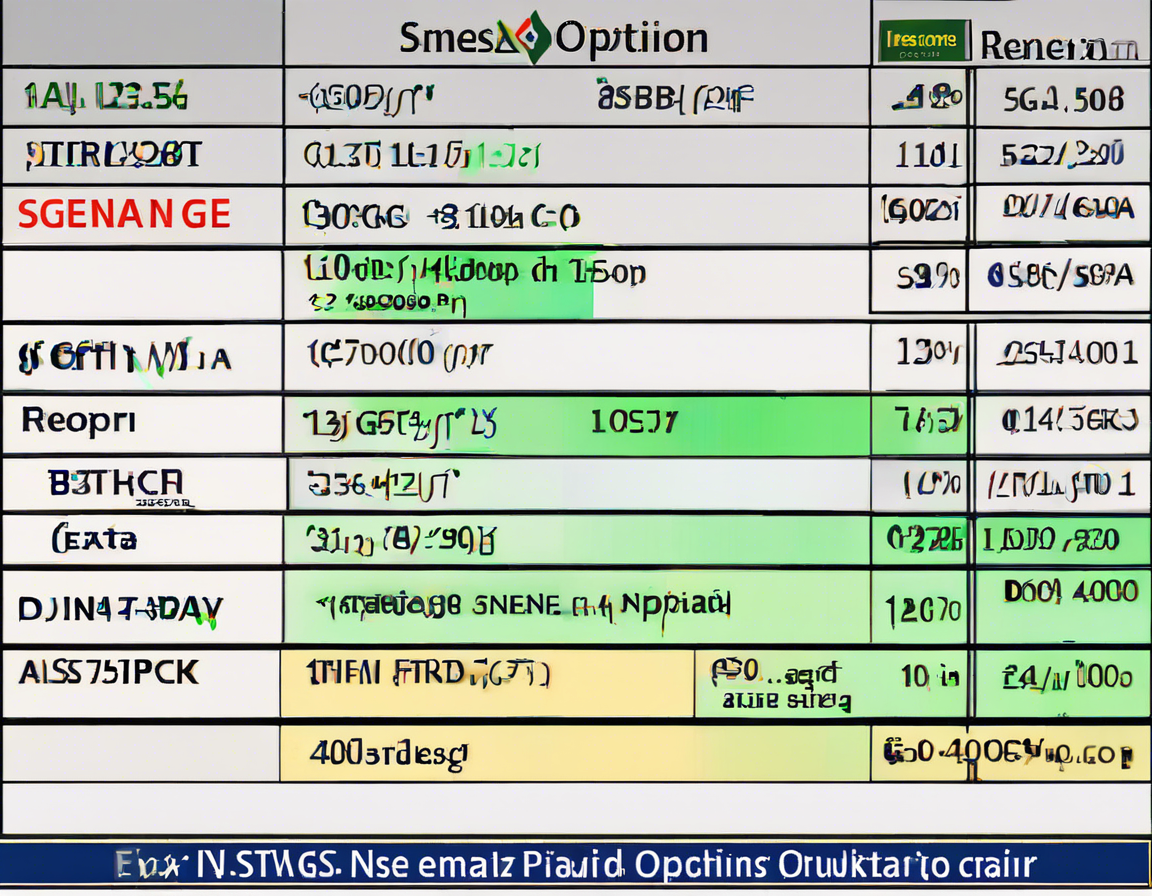The National Stock Exchange of India’s (NSE) Sensex option chain is a valuable tool for investors and traders looking to navigate the complexities of the stock market. Understanding how to interpret and utilize the option chain can provide crucial insights into market sentiment, potential price movements, and strategic trading opportunities. In this comprehensive guide, we will delve into the intricacies of the Sensex option chain, exploring its structure, key components, and practical applications.
Understanding the Option Chain
The option chain is a listing of all available option contracts for a particular underlying asset, such as stocks or indexes. On the NSE, the Sensex option chain displays a range of call and put options with different strike prices and expiry dates. Let’s break down the key components of the option chain:
-
Strike Prices: The strike price is the price at which the option holder can buy or sell the underlying asset. In the option chain, strike prices are listed in ascending order, with the at-the-money (ATM) strike price at the center.
-
Expiry Dates: Each option contract has a specific expiry date, indicating the date on which the contract expires. The option chain typically displays multiple expiry dates, allowing traders to choose different timeframes for their trades.
-
Call Options: Call options give the holder the right to buy the underlying asset at the strike price before the expiry date. In the option chain, call options are listed on the left side, with various strike prices and expiry dates.
-
Put Options: Put options give the holder the right to sell the underlying asset at the strike price before the expiry date. Put options are listed on the right side of the option chain, alongside different strike prices and expiry dates.
Interpreting the Option Chain
Analyzing the Sensex option chain can provide valuable insights into market expectations and potential price movements. Here are some key points to consider when interpreting the option chain:
-
Open Interest: Open interest represents the total number of outstanding option contracts for a particular strike price and expiry date. High open interest at a specific strike price indicates strong market interest and potential price levels where traders have significant positions.
-
Volume: Option volume reflects the number of contracts traded during a specific period. High volume levels can signal increased market activity and liquidity, making it easier for traders to enter and exit positions.
-
Implied Volatility: Implied volatility is a measure of market expectations for future price fluctuations. High implied volatility levels indicate greater uncertainty and can impact option prices. Traders often look for opportunities to capitalize on volatility changes.
-
Delta, Gamma, Theta, and Vega: These Greeks, derived from mathematical models, provide insights into how option prices are affected by various factors such as changes in the underlying asset price, time decay, and volatility fluctuations.
Practical Applications of the Option Chain
Traders and investors can leverage the information provided by the Sensex option chain in various ways to formulate trading strategies and manage risk effectively. Some practical applications include:
-
Identifying Support and Resistance Levels: Analyzing open interest and volume at different strike prices can help identify key support and resistance levels where option positions are concentrated.
-
Hedging Strategies: Options can be used as part of a hedging strategy to protect positions from adverse market movements. Traders can use put options to hedge against downside risk or call options to hedge against upside risk.
-
Speculative Trading: Traders looking to capitalize on short-term price movements can use the option chain to identify opportunities for speculative trading. By analyzing implied volatility and other factors, traders can make informed decisions on option strategies.
-
Income Generation: Selling options can generate income for traders through premium collection. By selling covered calls or cash-secured puts, traders can benefit from time decay and volatility contraction.
FAQs
- What is the significance of the at-the-money (ATM) strike price in the option chain?
-
The ATM strike price is where the underlying asset’s current price is closest. It often carries higher trading volumes and can serve as a reference point for market sentiment.
-
How can traders use the option chain to forecast potential price movements?
-
By analyzing open interest, volume, and implied volatility at different strike prices, traders can gauge market expectations and potential price levels.
-
What are the key factors that influence option prices as reflected in the option chain?
-
Factors such as the underlying asset price, time to expiry, volatility levels, and interest rates can impact option prices and are reflected in the option chain.
-
How does one select an appropriate expiry date when trading options using the option chain?
-
Traders consider various factors such as market conditions, expected price movements, and personal trading goals to select an expiry date that aligns with their strategy.
-
Can beginners use the Sensex option chain effectively for trading?
- While understanding the option chain may require some learning, beginners can start by familiarizing themselves with the basics and gradually integrating the insights gained into their trading decisions.
Conclusion
The NSE’s Sensex option chain is a powerful resource for traders looking to analyze market dynamics, assess risk, and implement strategic trading decisions. By understanding how to interpret the option chain’s components and apply the insights gained, traders can enhance their trading efficiency and navigate the complexities of the options market with confidence. Embracing the comprehensive guide to the Sensex option chain can empower traders to make informed decisions and capitalize on diverse trading opportunities.

